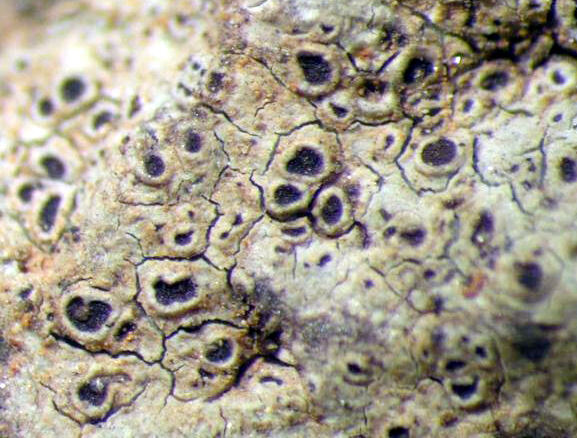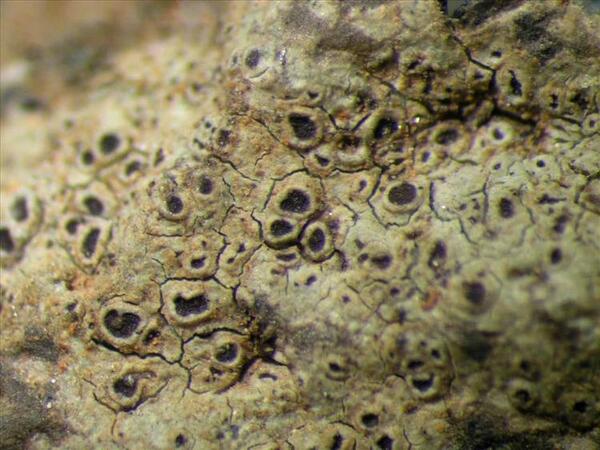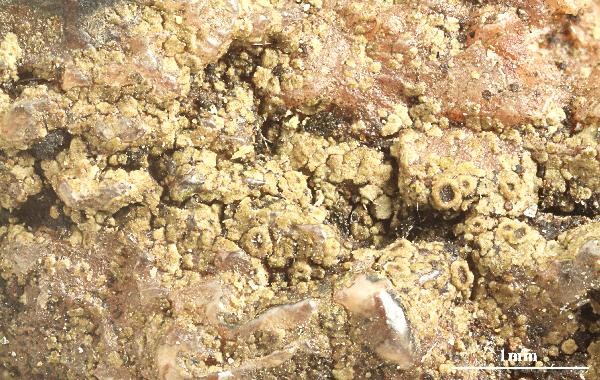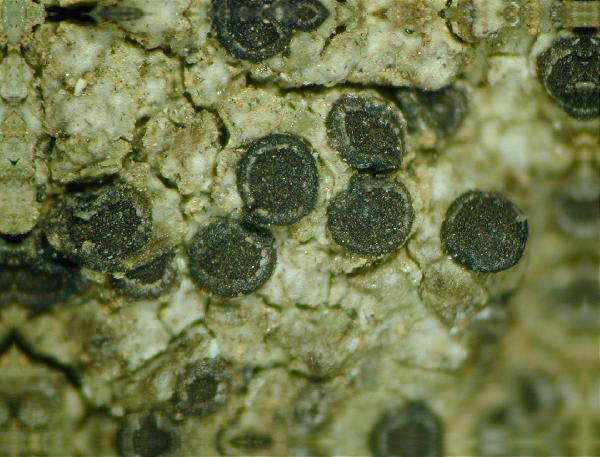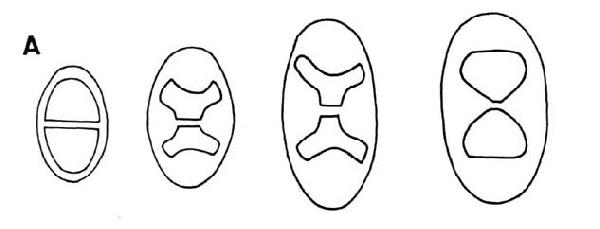Rinodina oxydata (A. Massal.) A. Massal.
Geneac. Lich.: 19, 1854. Basionym: Mischoblastia oxydata A. Massal. - Ric. Auton. Lich. Crost.: 42, 1852.
Synonyms: Berengeria oxydata (A. Massal.) Trevis.; Buellia discolor (Hepp) Anzi; Buellia discolor var. candida (Arnold) Anzi; Buellia griseonigra (Nyl.) Zahlbr.; Lecanora contribuens Nyl.; Lecanora discolorans (Arnold) Nyl.; Lecanora dissentanea Nyl.; Lecanora griseofusca Nyl.; Lecanora intuta Nyl.; Lecidea discolor Hepp; Rinodina aequalis (Nyl.) Zahlbr.; Rinodina biatorina Körb.; Rinodina candida Arnold; Rinodina concava B. de Lesd.; Rinodina contribuens (Nyl.) Boistel; Rinodina discolor (Hepp) Arnold; Rinodina dissimilis Anzi; Rinodina griseofusca (Nyl.) H. Olivier; Rinodina griseonigra (Nyl.) Zahlbr.; Rinodina imitatrix Zahlbr.; Rinodina intuta (Nyl.) H. Olivier; Rinodina lecideotropa (Nyl.) Zahlbr.; Rinodina oxydata var. squamulosa Bagl.; Rinodina subarenaria A.L. Sm.
Distribution: N - Ven (Lazzarin 2000b), TAA, Lomb (De Vita & Valcuvia 2004), Piem (Isocrono & al. 2004), VA (Piervittori & Isocrono 1999, Isocrono & al. 2008), Lig. C - Tosc (Ravera & al. 2019a), Sar (Rambold & al. 1994, Rizzi & al. 2011, Giordani & al. 2013).
Description: Thallus crustose, episubstratic, rather thin, smooth, rimose-areolate or areolate, sometimes delimited by a dark prothallus, the areoles up to 0.3-0.6 mm wide, flat, whitish, pale to dark grey or ochraceous, dull. Apothecia at first lecanorine and more or less immersed in thallus, becoming pseudolecanorine and adnate, 0.35-0.8 mm across, with a brown to black-brown (reddish brown when wet), usually flat disc, an entire, finally excluded thalline margin and a dark brown to black, persistent proper margin. Thalline exciple 40-60 µm wide, corticate; proper exciple colourless or more often with a blue-green pigment reacting K+ red and N+ reddish in outer part, c. 10 µm wide, expanding to c. 30 µm wide in upper part; epithecium pale brown, K-; hymenium colourless, 70-110 µm high; paraphyses 2-3 µm wide at base, the apical cells 4.5-6.5 µm wide; hypothecium colourless, 40-100 µm high. Asci 8-spored, clavate, intermediate between the Lecanora- and the Bacidia-type. Ascospores 1-septate, brown, broadly ellipsoid, (17-)19-23(-26) x (9-)10-13(-14) µm, Mischoblastia-type, rarely swollen at septum, the torus poorly developed, the walls lightly pigmented, faintly warted, with an ontogeny of type A (apical wall thickening after septum formation). Pycnidia dark, immersed. Conidia bacilliform, 3-5 x 1-1.5 µm. Photobiont chlorococcoid. Spot tests: K+ yellow, C-, KC-, P+ faintly yellow. Chemistry: cortex with atranorin.Note: a temperate to tropical, widespread species known from from southern Africa, Asia, Australia, North and South America, Macaronesia and Europe, found on seepage tracks of (mostly) base-rich, hard, smooth metamorphic rocks, often along mountain creeks. The species is widespread in the Alps, but has been also reported from the Mediterranean mountains.
Growth form: Crustose
Substrata: rocks
Photobiont: green algae other than Trentepohlia
Reproductive strategy: mainly sexual
Subcontinental: restricted to areas with a dry-subcontinental climate (e.g. dry Alpine valleys, parts of Mediterranean Italy)
Commonnes-rarity: (info)
Alpine belt: absent
Subalpine belt: absent
Oromediterranean belt: absent
Montane belt: rare
Submediterranean belt: very rare
Padanian area: absent
Humid submediterranean belt: very rare
Humid mediterranean belt: extremely rare
Dry mediterranean belt: absent
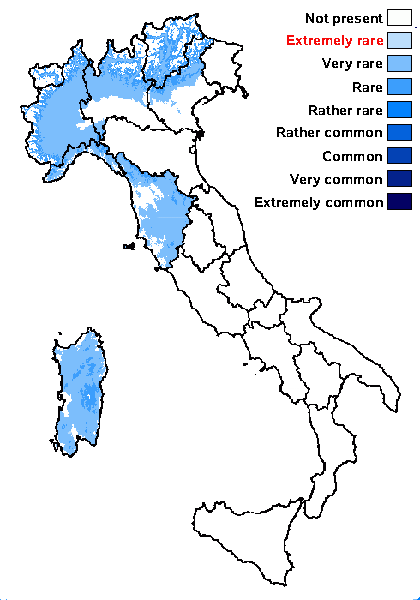
Predictive model
Herbarium samples
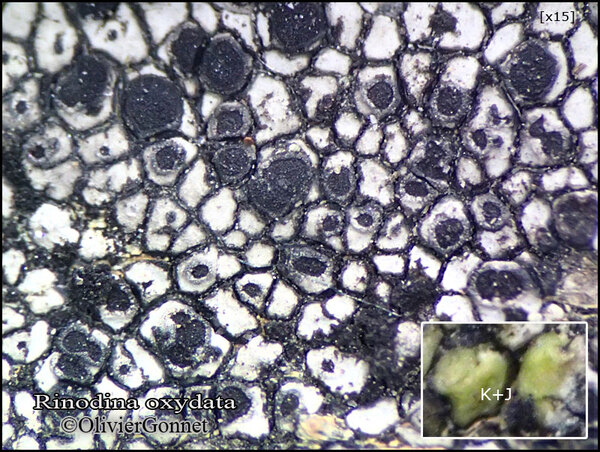
Courtesy Danièle et Olivier Gonnet - Source: https://www.afl-lichenologie.fr/Photos_AFL/Photos_AFL_R/Textes_R/Rinodina_oxydata.htm
France, 10/10/2014 - Valle-di-Rostino, Pont de Muzille, alt. 161 m - Corse
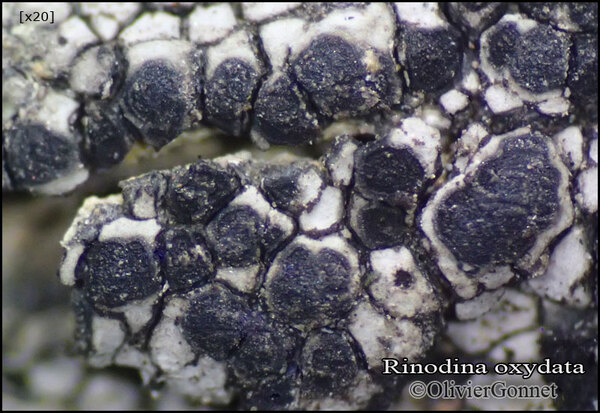
Courtesy Danièle et Olivier Gonnet - Source: https://www.afl-lichenologie.fr/Photos_AFL/Photos_AFL_R/Textes_R/Rinodina_oxydata.htm
France, 10/10/2014 - Valle-di-Rostino, Pont de Muzille, alt. 161 m - Corse
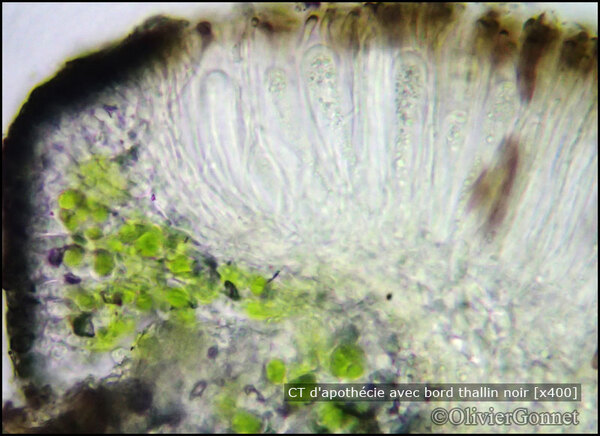
Courtesy Danièle et Olivier Gonnet - Source: https://www.afl-lichenologie.fr/Photos_AFL/Photos_AFL_R/Textes_R/Rinodina_oxydata.htm
France, 10/10/2014 - Valle-di-Rostino, Pont de Muzille, alt. 161 m - Corse
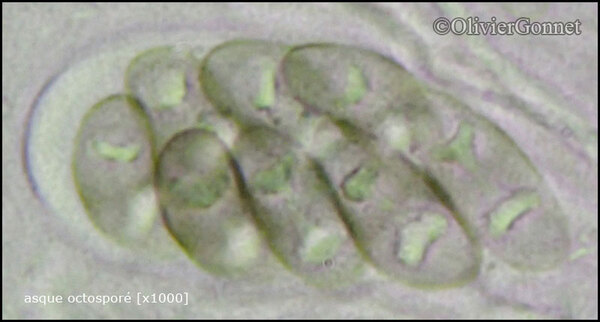
Courtesy Danièle et Olivier Gonnet - Source: https://www.afl-lichenologie.fr/Photos_AFL/Photos_AFL_R/Textes_R/Rinodina_oxydata.htm
France, 10/10/2014 - Valle-di-Rostino, Pont de Muzille, alt. 161 m - Corse
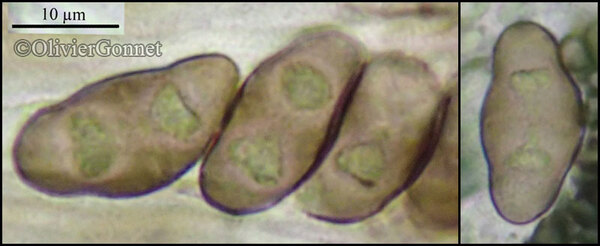
Courtesy Danièle et Olivier Gonnet - Source: https://www.afl-lichenologie.fr/Photos_AFL/Photos_AFL_R/Textes_R/Rinodina_oxydata.htm
France, 10/10/2014 - Valle-di-Rostino, Pont de Muzille, alt. 161 m - Corse
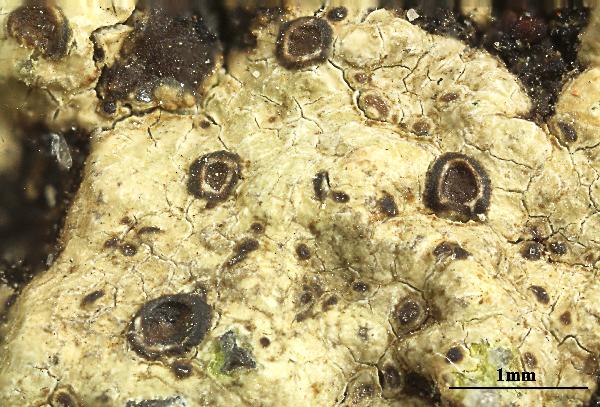

Felix Schumm - CC BY-SA 4.0
[ABL42412], Brazil, Alagoas, Quebrangulo, Pedra Talhada private
area. In Atlantic rain forest on granite. 9°15’ S, 36°25’35’’ W, 500-700
m. Leg. M. Cáceres & A. Aptroot (no 42412), 21-23.10.2017. . Det. A.
Aptroot, 2017. - Hymenium not inspersed, spores 8/ascus, 1-septate, 20
x 12 μm
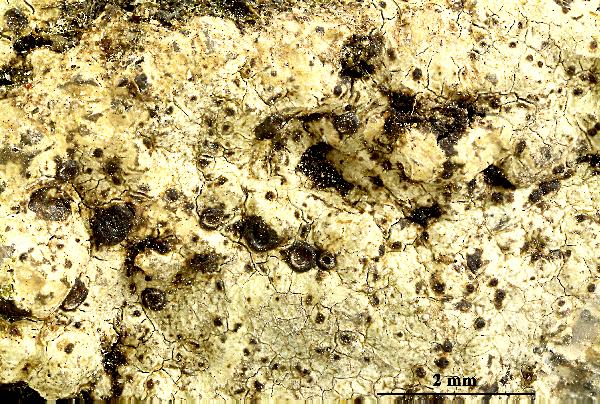

Felix Schumm - CC BY-SA 4.0
[ABL42412], Brazil, Alagoas, Quebrangulo, Pedra Talhada private
area. In Atlantic rain forest on granite. 9°15’ S, 36°25’35’’ W, 500-700
m. Leg. M. Cáceres & A. Aptroot (no 42412), 21-23.10.2017. . Det. A.
Aptroot, 2017. - Hymenium not inspersed, spores 8/ascus, 1-septate, 20
x 12 μm
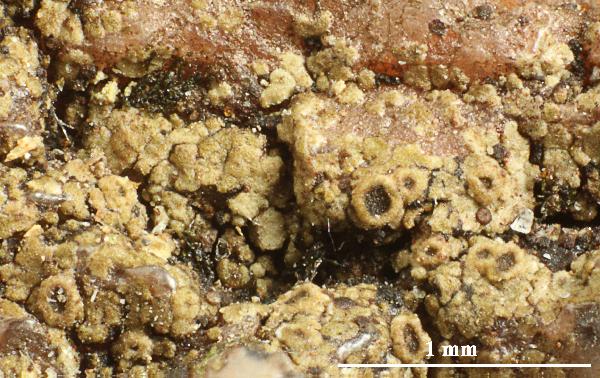

Felix Schumm - CC BY-SA 4.0
[ABL77771], Brazil, Mato Grosso do Sul, Morraria do Sul, outlook, in
Atlantic rain forest on siliceous rock. 20°33’ S, 56°54’03 W, 580 m.
Leg. A. Aptroot (no 77771), 6.11.2018, det. A. Aptroot, 2019 - Spores
1-septate, 12 x 5 μm.
Growth form: Crustose
Substrata: rocks
Photobiont: green algae other than Trentepohlia
Reproductive strategy: mainly sexual
Subcontinental: restricted to areas with a dry-subcontinental climate (e.g. dry Alpine valleys, parts of Mediterranean Italy)
Commonnes-rarity: (info)
Alpine belt: absent
Subalpine belt: absent
Oromediterranean belt: absent
Montane belt: rare
Submediterranean belt: very rare
Padanian area: absent
Humid submediterranean belt: very rare
Humid mediterranean belt: extremely rare
Dry mediterranean belt: absent

Predictive model
| Herbarium samples |

Courtesy Danièle et Olivier Gonnet - Source: https://www.afl-lichenologie.fr/Photos_AFL/Photos_AFL_R/Textes_R/Rinodina_oxydata.htm
France, 10/10/2014 - Valle-di-Rostino, Pont de Muzille, alt. 161 m - Corse

Courtesy Danièle et Olivier Gonnet - Source: https://www.afl-lichenologie.fr/Photos_AFL/Photos_AFL_R/Textes_R/Rinodina_oxydata.htm
France, 10/10/2014 - Valle-di-Rostino, Pont de Muzille, alt. 161 m - Corse

Courtesy Danièle et Olivier Gonnet - Source: https://www.afl-lichenologie.fr/Photos_AFL/Photos_AFL_R/Textes_R/Rinodina_oxydata.htm
France, 10/10/2014 - Valle-di-Rostino, Pont de Muzille, alt. 161 m - Corse

Courtesy Danièle et Olivier Gonnet - Source: https://www.afl-lichenologie.fr/Photos_AFL/Photos_AFL_R/Textes_R/Rinodina_oxydata.htm
France, 10/10/2014 - Valle-di-Rostino, Pont de Muzille, alt. 161 m - Corse

Courtesy Danièle et Olivier Gonnet - Source: https://www.afl-lichenologie.fr/Photos_AFL/Photos_AFL_R/Textes_R/Rinodina_oxydata.htm
France, 10/10/2014 - Valle-di-Rostino, Pont de Muzille, alt. 161 m - Corse


Felix Schumm - CC BY-SA 4.0
[ABL42412], Brazil, Alagoas, Quebrangulo, Pedra Talhada private area. In Atlantic rain forest on granite. 9°15’ S, 36°25’35’’ W, 500-700 m. Leg. M. Cáceres & A. Aptroot (no 42412), 21-23.10.2017. . Det. A. Aptroot, 2017. - Hymenium not inspersed, spores 8/ascus, 1-septate, 20 x 12 μm


Felix Schumm - CC BY-SA 4.0
[ABL42412], Brazil, Alagoas, Quebrangulo, Pedra Talhada private area. In Atlantic rain forest on granite. 9°15’ S, 36°25’35’’ W, 500-700 m. Leg. M. Cáceres & A. Aptroot (no 42412), 21-23.10.2017. . Det. A. Aptroot, 2017. - Hymenium not inspersed, spores 8/ascus, 1-septate, 20 x 12 μm


 INDEX FUNGORUM
INDEX FUNGORUM
 GBIF
GBIF
 DOLICHENS
DOLICHENS
